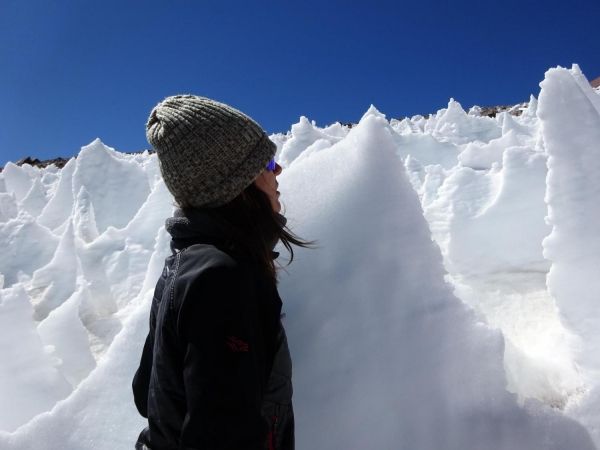High in the Andes Mountains, dagger-shaped ice spires house thriving microbial communities, offering an oasis for life in one of Earth’s harshest environments as well as a possible analogue for life on other planets.
The distinctive icy blade formations known as nieves penitentes (or, “penitent ones”) are named for their resemblance to praying monks in white robes and form in cold, dry conditions at elevations above 13,000 feet. The penitentes, which can range from a few inches to 15 feet high, are found in some of the most hostile conditions on Earth, with extreme winds, temperature fluctuations and high UV radiation exposure due to the thin atmosphere.
And yet, as a recently published study led by University of Colorado Boulder student researchers finds, these spires offer shelter for microbes by providing a water source in an otherwise arid, nutrient-poor environment.
In March 2016, CU Boulder students and faculty members traveled to Volcán Llullaillaco in Chile, the world’s second-highest volcano. The two-week expedition into the arid landscape, planned in collaboration with their Chilean colleagues, was no easy feat.
“This is a very remote area that’s difficult to access,” said Steve Schmidt, a professor in CU Boulder’s Department of Ecology and Evolutionary Biology (EBIO) and a co-author of the study. “The entire back of one of our pickup trucks had to be filled with barrels of drinking water. It’s no trivial thing to go out there, and that’s one of the reasons these formations haven’t been studied much.”
Read more at University of Colorado Boulder
Photo: EBIO PhD student Lara Vimercati examines a nieves penitentes structure on Volcán Llullaillaco in Chile. CREDIT: Steve Schmidt / University of Colorado Boulder


